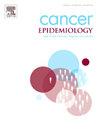Occupational benzene exposure and risk of nervous system cancers: A systematic review and meta-analysis
IF 2.4
3区 医学
Q3 ONCOLOGY
引用次数: 0
Abstract
Background
Benzene is a solvent that has played a significant role in various industries and applications over time, but its use declined due to its carcinogenic nature. Classified as a human carcinogen since 1979, benzene exposure is linked to leukemia and possibly other cancers. The global rise of nervous system cancers urges investigation into the possible role of benzene. Our aim is to investigate this association through a systematic review and meta-analysis of occupational cohort and case-control studies.
Methods
We registered our study protocol and followed established guidelines (Registration No. CRD42022379720). A systematic search across databases yielded 36 independent cohort and case-control studies. We conducted a random-effects meta-analysis of relative risks (RR) for nervous system cancers. Analyses were stratified based on various factors such as region, study design, and exposure level. Publication bias was evaluated using a funnel plot and Egger test.
Results
Our meta-analysis indicates an association between benzene exposure and risk of overall nervous system cancers (RR = 1.21, 95 % confidence interval [CI] = 1.05–1.38). Stratified analyses showed an association with glioma (RR = 3.88, 95 % CI = 1.33–11.31, N risk estimates=2). Publication bias was detected (p = 0.01).
Conclusion
Our study found an association between occupational benzene exposure and increased risks of nervous system cancers, which however cannot be interpreted as causal. While these findings highlight the need for stringent safety measures, they also reveal gaps in literature. Further research is essential to address these limitations and deepen our understanding of benzene's health implications.
职业性苯暴露与神经系统癌症风险:一项系统回顾和荟萃分析
苯是一种溶剂,随着时间的推移,它在各种工业和应用中发挥了重要作用,但由于其致癌性,它的使用减少了。自1979年以来,苯就被列为人类致癌物,接触苯与白血病和其他可能的癌症有关。全球神经系统癌症的增加促使人们对苯的可能作用进行调查。我们的目的是通过对职业队列和病例对照研究的系统回顾和荟萃分析来调查这种关联。方法我们注册了我们的研究方案,并遵循既定的指导方针(注册号:CRD42022379720)。通过对数据库的系统搜索,得出了36项独立的队列和病例对照研究。我们对神经系统癌症的相对风险(RR)进行了随机效应荟萃分析。根据不同的因素,如地区、研究设计和暴露水平,对分析进行分层。采用漏斗图和Egger检验评价发表偏倚。结果我们的荟萃分析显示苯暴露与整体神经系统癌症风险之间存在关联(RR = 1.21, 95 %置信区间[CI] = 1.05-1.38)。分层分析显示与胶质瘤相关(RR = 3.88, 95 % CI = 1.33-11.31, N风险估计值=2)。存在发表偏倚(p = 0.01)。结论:本研究发现职业性苯暴露与神经系统癌症风险增加之间存在关联,但不能解释为因果关系。虽然这些发现强调了严格的安全措施的必要性,但它们也揭示了文献中的空白。进一步的研究对于解决这些局限性和加深我们对苯对健康影响的理解至关重要。
本文章由计算机程序翻译,如有差异,请以英文原文为准。
求助全文
约1分钟内获得全文
求助全文
来源期刊

Cancer Epidemiology
医学-肿瘤学
CiteScore
4.50
自引率
3.80%
发文量
200
审稿时长
39 days
期刊介绍:
Cancer Epidemiology is dedicated to increasing understanding about cancer causes, prevention and control. The scope of the journal embraces all aspects of cancer epidemiology including:
• Descriptive epidemiology
• Studies of risk factors for disease initiation, development and prognosis
• Screening and early detection
• Prevention and control
• Methodological issues
The journal publishes original research articles (full length and short reports), systematic reviews and meta-analyses, editorials, commentaries and letters to the editor commenting on previously published research.
 求助内容:
求助内容: 应助结果提醒方式:
应助结果提醒方式:


